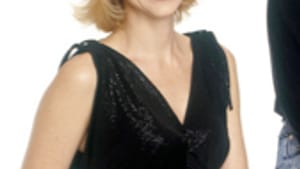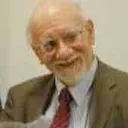Stay in the Loop
BSR publishes on a weekly schedule, with an email newsletter every Wednesday and Thursday morning. There’s no paywall, and subscribing is always free.
Orchestra 2001, French style

Genesis, Hitler and a three-ring circus
TOM PURDOM
Two weeks ago the Philadelphia Orchestra gave us the creation of the world, Mayan style, musical soundtrack by the Argentine composer Alberto Ginastera. For its season finale, Orchestra 2001 did it French style, sound track by Darius Milhaud with input from 1920s jazz musicians.
In Genesis, according to the Mayans, the climactic moment is the creation of a creature that can speak to the gods. In the French version, it’s the creation of man and woman, followed by the desire of man and woman, and concluded with a kiss.
Milhaud was one of the French composers who, like Poulenc, incorporated elements of jazz into their music. The thread that runs through his first movement overture is a soft, lovely saxophone solo (beautifully played in this performance by Samuel Lorber). The chaos that precedes creation is depicted by a jazz fugue that includes moments when the clarinets and violins stand up and do riffs. An all-out cakewalk with some great stuff for brass celebrates the advent of the two halves of the human species.
Overall, La Creation du Monde is a good-natured, irresistibly appealing piece that thoroughly deserves James Freeman’s judgment, expressed in the program notes, that it’s “one of the most important pieces of the 1920s” and “a real masterpiece.”
A ballerina on a tightrope
In his remarks before the premiere of his new violin concerto, Penn composer Jay Reise noted that it could be called a concerto for orchestra with violin solo. Instead of accompanying the soloist, different parts of the orchestra comment on the soloist’s work and counterpoint it. Reise limited his forces, in addition, to one wind instrument of each type and forced himself to play with color combinations. “In an instance where a composer like Mozart would combine two oboes or two horns,” he wrote in the program notes, “I combine similar but not identical instruments, such as clarinet and bassoon, horn and trombone, or oboe and muted trumpet.”
The result resembles a circus spectacle in which a prima ballerina dances on a tightrope while all the other acts in a three-ring circus perform under her. You can’t follow everything that’s happening, but some details catch your fancy and the sheer complexity of the event creates a spell of its own.
The soloist was Maria Bachmann, a violinist who has made contemporary music one of her specialties. I believe this is the third time in the last 15 months that I’ve watched a young woman work through an almost continuous, obviously difficult violin concerto. Women may lack the stamina for sustained infantry combat, but anyone who has witnessed a contemporary violin concerto has acquired some observational evidence that they can handle everything else.
Paris in Hitler’s shadow
Freeman concluded the evening with another French work he considers a 20th-Century masterpiece: Arthur Honegger’s three-movement Second Symphony. For this piece, as with the Milhaud, Freeman and his musicians once again produced a strong argument in support of his opinion.
I’m normally skeptical about theories that link a composer’s biography with his works, but it’s reasonable to conclude that a dark symphony written by a Frenchman living in Paris in 1941, in the depths of the German occupation, with enemy soldiers moving about the streets, expresses feelings inspired by the events transpiring outside the composer’s window.
By limiting himself to a string orchestra (with one critical addition), Honegger avoided the temptation to depict war with melodramatic brass and drums. The opening movement contains a few passages that suggest tanks and airplanes, but the overall mood is restrained and subdued.
The first half of the second movement is a soundtrack for desolation. The last half is a portrait of the human soul laboring under an immense burden.
The third movement shifts to a more theatrical mood, with marching rhythms and a kind of daydream of liberation. At the last minute, the trumpeter sitting in the back of the stage stands up and sends a trumpet call sailing across the orchestra.
It’s an ending that could have seemed forced or shallow under any other circumstances. Honegger wasn’t sitting in a Hollywood studio writing music for reassuring movies, and he wasn’t looking back on the war through a haze of nostalgia years after it ended. He summoned that trumpet call from a front line position at the low point of the 20th Century, at a time when he was surrounded by defeat and every country on the European continent had fallen into the hands of conquerors and dictators. And, of course, the war did end about the same way his symphony does.
TOM PURDOM
Two weeks ago the Philadelphia Orchestra gave us the creation of the world, Mayan style, musical soundtrack by the Argentine composer Alberto Ginastera. For its season finale, Orchestra 2001 did it French style, sound track by Darius Milhaud with input from 1920s jazz musicians.
In Genesis, according to the Mayans, the climactic moment is the creation of a creature that can speak to the gods. In the French version, it’s the creation of man and woman, followed by the desire of man and woman, and concluded with a kiss.
Milhaud was one of the French composers who, like Poulenc, incorporated elements of jazz into their music. The thread that runs through his first movement overture is a soft, lovely saxophone solo (beautifully played in this performance by Samuel Lorber). The chaos that precedes creation is depicted by a jazz fugue that includes moments when the clarinets and violins stand up and do riffs. An all-out cakewalk with some great stuff for brass celebrates the advent of the two halves of the human species.
Overall, La Creation du Monde is a good-natured, irresistibly appealing piece that thoroughly deserves James Freeman’s judgment, expressed in the program notes, that it’s “one of the most important pieces of the 1920s” and “a real masterpiece.”
A ballerina on a tightrope
In his remarks before the premiere of his new violin concerto, Penn composer Jay Reise noted that it could be called a concerto for orchestra with violin solo. Instead of accompanying the soloist, different parts of the orchestra comment on the soloist’s work and counterpoint it. Reise limited his forces, in addition, to one wind instrument of each type and forced himself to play with color combinations. “In an instance where a composer like Mozart would combine two oboes or two horns,” he wrote in the program notes, “I combine similar but not identical instruments, such as clarinet and bassoon, horn and trombone, or oboe and muted trumpet.”
The result resembles a circus spectacle in which a prima ballerina dances on a tightrope while all the other acts in a three-ring circus perform under her. You can’t follow everything that’s happening, but some details catch your fancy and the sheer complexity of the event creates a spell of its own.
The soloist was Maria Bachmann, a violinist who has made contemporary music one of her specialties. I believe this is the third time in the last 15 months that I’ve watched a young woman work through an almost continuous, obviously difficult violin concerto. Women may lack the stamina for sustained infantry combat, but anyone who has witnessed a contemporary violin concerto has acquired some observational evidence that they can handle everything else.
Paris in Hitler’s shadow
Freeman concluded the evening with another French work he considers a 20th-Century masterpiece: Arthur Honegger’s three-movement Second Symphony. For this piece, as with the Milhaud, Freeman and his musicians once again produced a strong argument in support of his opinion.
I’m normally skeptical about theories that link a composer’s biography with his works, but it’s reasonable to conclude that a dark symphony written by a Frenchman living in Paris in 1941, in the depths of the German occupation, with enemy soldiers moving about the streets, expresses feelings inspired by the events transpiring outside the composer’s window.
By limiting himself to a string orchestra (with one critical addition), Honegger avoided the temptation to depict war with melodramatic brass and drums. The opening movement contains a few passages that suggest tanks and airplanes, but the overall mood is restrained and subdued.
The first half of the second movement is a soundtrack for desolation. The last half is a portrait of the human soul laboring under an immense burden.
The third movement shifts to a more theatrical mood, with marching rhythms and a kind of daydream of liberation. At the last minute, the trumpeter sitting in the back of the stage stands up and sends a trumpet call sailing across the orchestra.
It’s an ending that could have seemed forced or shallow under any other circumstances. Honegger wasn’t sitting in a Hollywood studio writing music for reassuring movies, and he wasn’t looking back on the war through a haze of nostalgia years after it ended. He summoned that trumpet call from a front line position at the low point of the 20th Century, at a time when he was surrounded by defeat and every country on the European continent had fallen into the hands of conquerors and dictators. And, of course, the war did end about the same way his symphony does.
Sign up for our newsletter
All of the week's new articles, all in one place. Sign up for the free weekly BSR newsletters, and don't miss a conversation.

 Tom Purdom
Tom Purdom